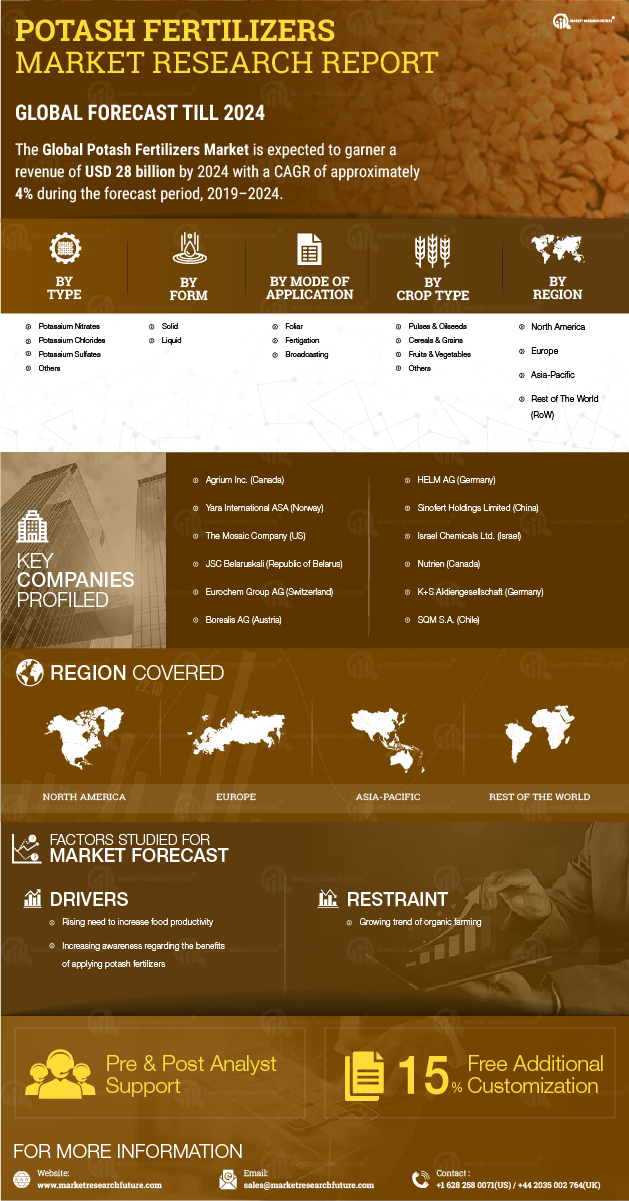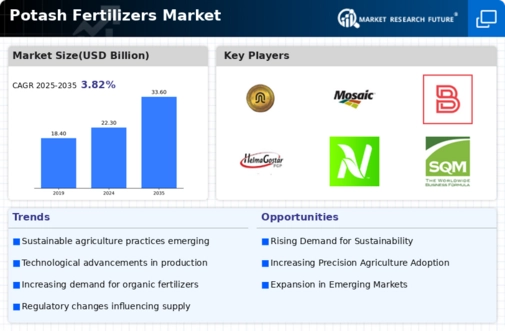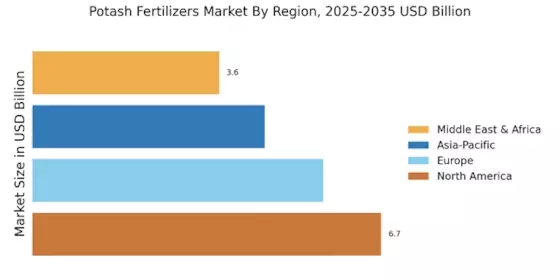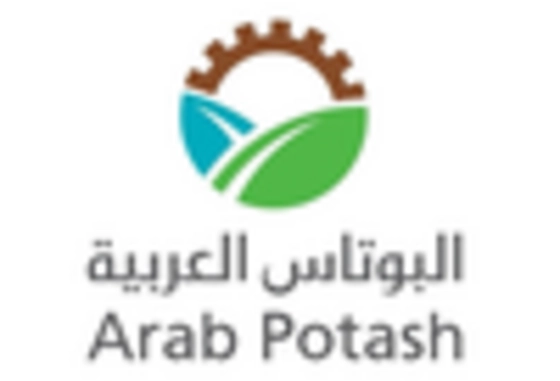Increasing Crop Production Needs
The Potash Fertilizers Market is experiencing a surge in demand driven by the increasing need for higher crop yields. As the global population continues to grow, the pressure on agricultural systems to produce more food intensifies. Potash fertilizers, known for their potassium content, play a crucial role in enhancing plant growth and improving crop quality. According to recent agricultural reports, the demand for potash fertilizers is projected to rise by approximately 3% annually, reflecting the urgent need for efficient nutrient management in farming practices. This trend is particularly evident in regions where intensive farming is prevalent, as farmers seek to maximize their output to meet both local and international market demands.
Shift Towards Sustainable Farming
The Potash Fertilizers Market is increasingly influenced by the shift towards sustainable farming practices. Farmers are becoming more aware of the environmental impacts of traditional farming methods and are seeking alternatives that promote soil health and reduce chemical runoff. Potash fertilizers, when used judiciously, can enhance soil fertility while minimizing negative environmental effects. The adoption of sustainable practices is expected to drive the potash market, with a projected increase in usage by 4% over the next five years. This shift not only aligns with consumer preferences for sustainably produced food but also supports regulatory frameworks aimed at promoting environmentally friendly agricultural practices.
Government Initiatives and Support
The Potash Fertilizers Market is benefiting from various government initiatives aimed at boosting agricultural productivity. Many governments are implementing policies that support the use of fertilizers, including potash, to enhance food security and promote sustainable agricultural practices. Subsidies, research funding, and educational programs are being introduced to encourage farmers to adopt modern fertilization techniques. Recent data indicates that countries with supportive policies have seen a 10% increase in potash fertilizer usage over the past few years. These initiatives not only facilitate access to essential nutrients but also promote the responsible use of fertilizers, ensuring that agricultural practices align with environmental sustainability goals.
Rising Demand for High-Quality Produce
The Potash Fertilizers Market is significantly impacted by the rising consumer demand for high-quality produce. As consumers become more health-conscious, there is a growing preference for fruits and vegetables that are not only visually appealing but also nutritionally rich. Potash fertilizers contribute to the quality of produce by enhancing flavor, color, and shelf life. Market analysis suggests that the demand for potash fertilizers will increase by approximately 5% in response to this trend, as farmers strive to meet consumer expectations. This shift towards quality over quantity is reshaping agricultural practices, leading to a greater reliance on specialized fertilizers like potash to achieve desired crop characteristics.
Technological Innovations in Fertilizer Application
The Potash Fertilizers Market is witnessing a wave of technological innovations that enhance the efficiency of fertilizer application. Precision agriculture technologies, such as soil sensors and variable rate application systems, allow farmers to apply potash fertilizers more effectively, optimizing nutrient delivery to crops. This technological advancement is likely to increase the adoption of potash fertilizers, as it enables farmers to achieve better yields with lower input costs. Market data indicates that the integration of technology in fertilizer application could lead to a 20% reduction in fertilizer waste, thereby improving the overall sustainability of agricultural practices. As these technologies become more accessible, the potash market is expected to expand significantly.


















Leave a Comment